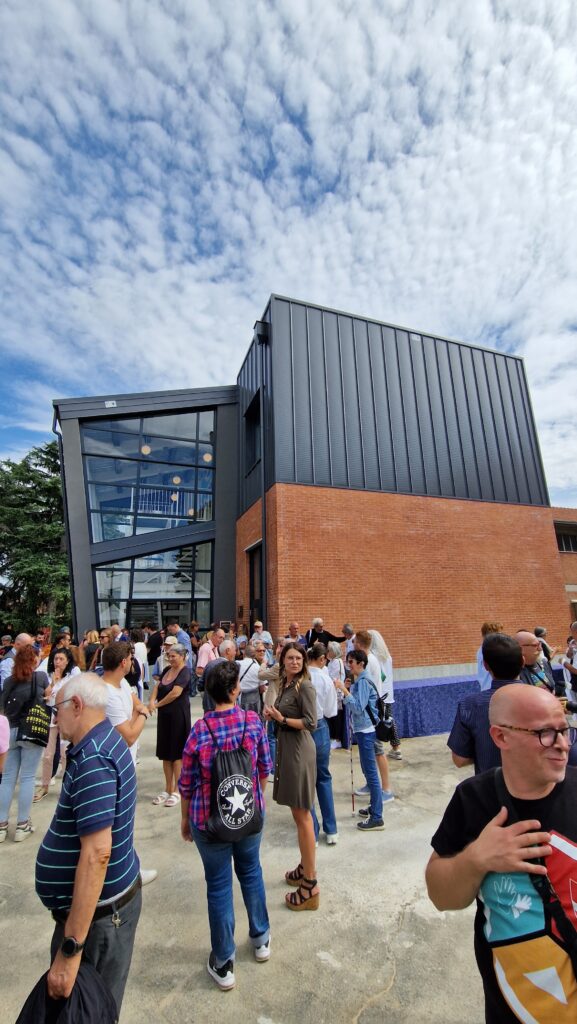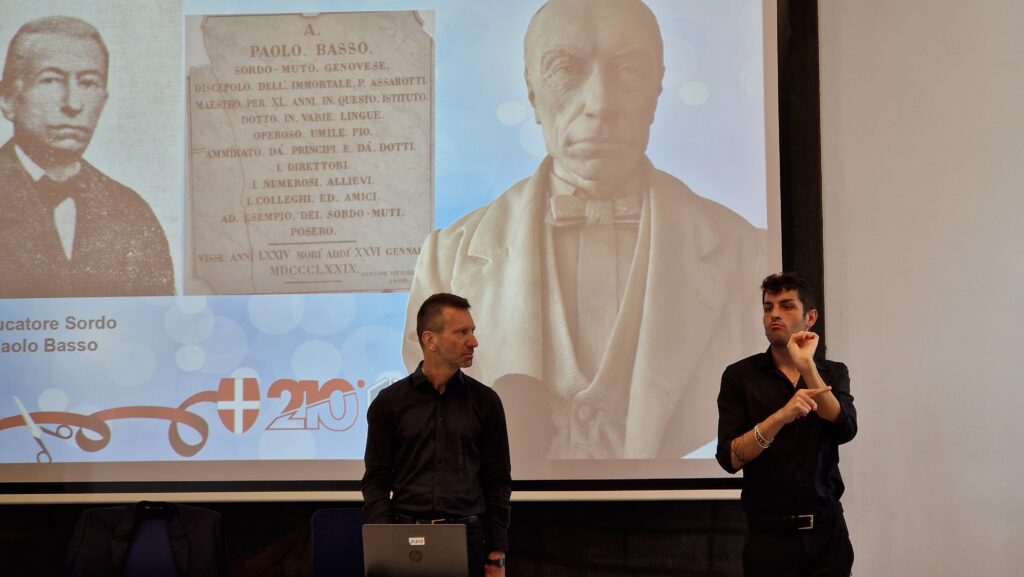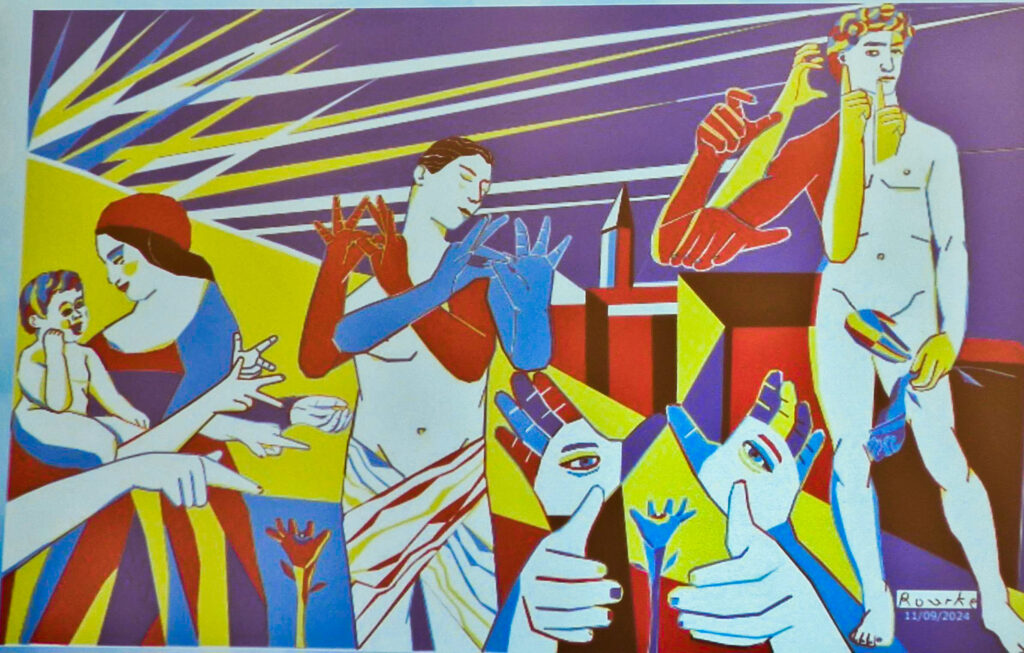Education comes in many forms. There is formal education, from primary school to university. Additionally, you can learn informally, for example, by visiting a museum, going to the zoo, or debating with friends about who should be the next U.S. president. There is also non-formal education. It offers more freedom compared to formal education but is more structured than informal learning. Through workshops and discussions, you can learn more about topics you already know and have experience with.
Nowadays, non-formal education does not receive much attention. This is unfortunate because it offers new knowledge and helps you bring out the best in yourself. It is also very suitable for older people or those who find learning difficult. It fits well with the idea of lifelong learning. The European Union of Deaf Youth (EUDY) organizes several training sessions and seminars annually for deaf youth in Europe. In Norway, Denmark, and Sweden, there are still folk high schools for the deaf, where they can gain extra knowledge in areas like language, cooking, and crafts.
In the Netherlands, there used to be a high school for the deaf, first in Bergen and later in Bakkeveen. Deaf people learned how to cope in the workplace with hearing colleagues, camps were organized, and parents of deaf children could exchange experiences. Unfortunately, due to government cuts, these schools no longer exist in the Netherlands. The same developments can be seen in many other countries. Not only is non-formal education under pressure, but formal education for the deaf has also been struggling for decades. But that is a topic for another article.
That’s why it is especially remarkable that the Istituto dei Sordi di Torino (IST) decided to revive non-formal education for the deaf in Italy through the IST Academy. And they are doing it on a grand scale: a new building worth approximately 6 million euros was constructed in just one year and now stands proudly next to the old IST buildings. On September 12th, the grand opening took place, and Dennis Hoogeveen from Deaf Journalism Europe was invited to take a look.

The building of the Academy
Among the guests were a wide range of prominent deaf and hearing people. Notable attendees included EUDY President Daniel Lolici and the founder of the Unusualverse website, Emilio Ferreira. Representatives from the city of Turin and the Piemonte region were also present, along with over 100 deaf people who live in Turin and/or were students at IST.
The IST Academy’s concept is impressive. Nicola Della Maggiora, director of the Academy, explained that its foundation is built on three pillars: digital education, the UN Convention on the Rights of Persons with Disabilities, and Deaf Studies. Every program offered at the Academy will involve at least one of these components. “The idea for the Academy came when I attended Frontrunners (at the same place where Denmark’s high school is located). There, I learned a lot about Deaf Studies and sign languages. Then I realized that nothing like that existed in Italy. There were individual workshops, but nothing structured. As a result, many ideas faded, and motivation disappeared. When Italian deaf people were told something was impossible, they believed it was. I wanted to remove the ‘im’ from impossible.” When he started working at IST, he was mentored by director Enrico Dolza, for which Maggiora is very grateful. During his speeches at the opening, he often referred to Dolza’s support. “At first, Dolza didn’t believe deaf staff could come up with concepts. But when he saw me teach at the university, he was amazed. I emphasized that I wasn’t the only one; many deaf people can work at a high level. At IST, I created a safe environment with deaf colleagues, and together, we developed the Academy’s concept.”

Nicola Della Maggiora at the opening of the Academy
The Academy’s first activity will begin on Monday, September 16th, with a week-long program for deaf European youth, covering topics like Erasmus+ projects, museum accessibility, and Deaf culture. This week is somewhat similar to Frontrunners, which is no coincidence since Maggiora is a former student. But do Frontrunners mind a similar program being run elsewhere in Europe? Maggiora says, “Not at all. In fact, I reached out to them, explained my idea for the Academy, and asked if it was okay that the concept resembled Frontrunners. They were fully supportive. They already believed that non-formal education for the deaf should be more widespread in other countries, not just Denmark. I want to go further. I want the Academy to spread to more cities in Italy. It’s important to me that local deaf communities become stronger through what they learn at these Academies.”
Let’s go back to the new building. It was built on the site of Sala Effeta, originally a workshop space, later a theater, and eventually downgraded to storage. Due to its poor condition, it was demolished. Before that, a painting by Mattia Traverso from 1946 was saved and preserved. The painting is called Effetà (Effatha). It shows Jesus placing two fingers in the mouth of a boy, about seven years old, trying to cure his deafness. During the opening, the painting was rehung, providing a stark contrast to the white walls of the new hall. The sight of the painting made Maggiora visibly emotional, but Dolza explained that it was chosen to remind everyone of IST’s origins and what it stands for today. That’s why they also asked the deaf American artist Nancy Rourke, known for her Rourkian colors (red, yellow, blue, black, and white), to paint a mural on one of the walls. Rourke was present for the occasion and brought her design for the mural with her.

The mural by Nancy Rourke
In an interview with DJE, Rourke said she had a intense reaction to Traverso’s painting. “It clearly showed that deaf people were seen as bad, and deafness was something to be ashamed of. But I know there is nothing wrong with being deaf, and it’s something to be proud of.” Developing the concept for a new painting took two years and, according to Dolza and Maggiora’s request, it was meant to be a response to Traverso’s painting. That’s why both paintings will hang in the same room, allowing the people depicted in the paintings to look at each other. Rourke included 19 symbols in her painting, such as a sunrise representing a new beginning. There is also a deaf Mary with a deaf child using sign language. The most striking figure is a young man called David, who resembles Michelangelo’s David. Rourke explained that this is the boy from the first painting, now grown up. He is still deaf and proud of it because he can now sign and experience the world through his eyes.
What is Maggiora’s vision for the Academy? Where will it be in 10 years? “I hope to have more deaf staff here. Of the 300 employees IST has, only 25 are deaf. I hope the Academy becomes a place where deaf staff feel at home and can contribute to deaf education. This would align perfectly with the UN CRPD, which is one of the pillars of the Academy and IST.”
With the opening of the Academy, the decline of deaf education in Italy seems to have stopped for now. This offers new hope for the Italian deaf community and serves as an inspiration for other deaf communities across Europe.


Ik versta geen internationaal gebarentaal…..waar kan ik internationaal gebarentaal leren?